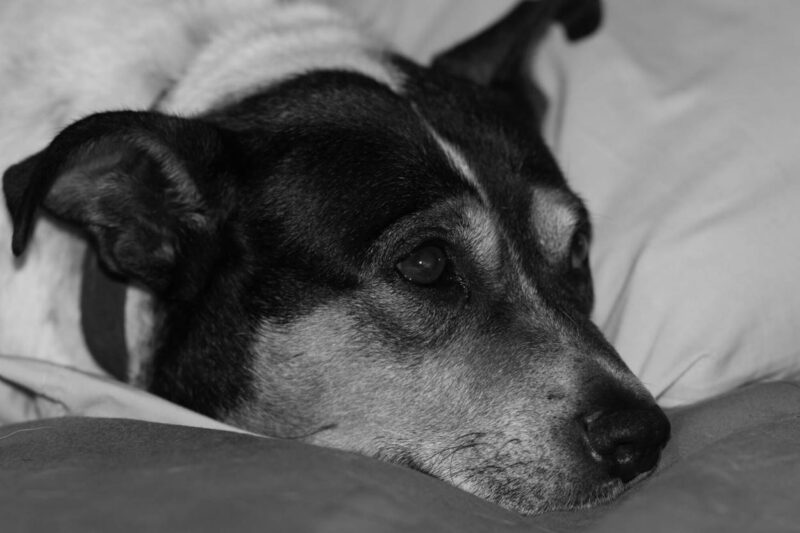Dogs are therapy for us. The unconditional love and affection we receive from our pups are amazing.
Did you know that in the United States, there are more dogs than children? Dogs are very much part of the family, but they might need a little bit of help once in a while.
Not only do dogs sometimes get physically ill, but they also have anxiety. Did you know that dogs have anxiety disorders, too?
Keep reading to learn more about signs your dog has pet anxiety and how to help them.
Trembling or Shaking
If your dog is trembling or shaking while being in a new situation, around a stranger, or after a sudden noise, it most likely means they are feeling anxious. To help address their anxiety, you can try to provide a safe and comfortable environment, reassure your pet with calm comforting words and gentle petting, and distract them with toys or treats.
It is important to avoid smothering or punishing them because this can worsen the situation. Working with a positive reinforcement trainer or using an easy desensitization technique can also be helpful. Most importantly, pay attention to your pet’s body language so you can understand what is causing their anxiety and how you can best support them.
Hiding
This behavior could be easily triggered by loud noises, visitors, new environments, and more. Dogs that have been abandoned or have previously experienced trauma may be even more inclined to hide due to the fear associated with their past. When a dog is feeling anxious or scared, the physical changes in their body do a lot to create triggers.
It is important to respond to this behavior in a calm and calming manner, rather than punishing the dog or trying to force them out of the hiding spot. Providing your pet with comforts such as soft bedding and toys can help to put them at ease.
Excessive Drooling
It can also be a sign of medical problems. If your dog is drooling more than usual, it is important to try to identify what is causing the anxiety first. If you are able to determine the cause, it may be possible to avoid it or help the dog become acclimated to the source.
If the source cannot is undefinable, there are other things that you can do to help soothe the dog’s anxiety. Homeopathic remedies and calming treats can help, or set up a behavior training program to help your dog build confidence. Additionally, spend quality time with your dog, play, pet, and cuddle to strengthen the relationship between you and your pup.
Loss of Appetite
If a pet suddenly stops eating, it can be a sign that there’s an underlying psychological issue. It’s important to pay attention to the behavior of a pet when it stops eating, as it can be an indication of underlying mental stress and a possible health issue. It can be helpful to analyze the environment of the dog to look for possible triggers that might be causing the anxiety.
The pet may be acting out due to changes in the household or its environment. Providing the pet with comfort and a safe environment is key to helping them relax.
Exercise and stress-reducing activities may also be helpful. It is important to take measures to reduce the anxiety and stress of your pet to get back to a healthy appetite.
Self-Harming Behavior
It is an abnormal behavior where dogs will self-inflict injuries, such as biting or chewing parts of their body to the point of causing bleeding and the damage of tissue. Dogs may be at risk of developing self-harming behavior if they have a history of abuse or have been separated from their owners.
To address this kind of behavior, owners must provide their dogs with positive reinforcement and affection, proper exercise, and mental stimulation. Additionally, owners should consult a veterinarian for medical advice and to rule out any health issues. Additionally, it is important to modify the dog’s environment in order to remove any potential triggers that could cause stress and anxiety.
Licking Their Feet
Dogs lick their feet because it can be soothing to them and they often do this when they are being anxious pets. Some dogs may even compulsively lick their feet if they have separation anxiety or if they have been through some sort of traumatic experience. If you think your dog is suffering from anxiety, you should take them to the vet to try and identify the source.
You can also try to reduce stress for your dog through exercise, playing with them, and spending quality time together. Depending on the intensity of their anxiety, there may be other strategies to implement such as desensitization and counterconditioning methods. If the reasons why dogs lick feet persist or worsen, consulting the vet is the best action to take.
Panting
It usually occurs after a stressful experience such as an unfamiliar situation, a loud noise, or a new visit to the vet. Dogs can also pant if they’ve been exposed to high levels of stress for an extended period of time, such as during travel in a car or airplane, which can both cause anxiety.
Panting is the body’s way of releasing built-up anxiety. The most important thing to do when your dog is panting due to anxiety is to remain calm and provide reassurance.
Talk to them in a soothing voice and pet them gently. You can also take the focus off of the stressful situation by offering a treat or toy to help them relax. If the panting persists and you’re concerned, it might be best to consult a veterinarian.
Clinginess
Dogs typically become clingy when their perceived sense of safety is threatened. It is a sign of distress for them, and if it persists it may be an indication that there is some underlying anxiety. Signs of clinginess can include excessive licking, following their owner around constantly, and reluctance to be left alone.
Dealing with this behavior in the right way is essential as it is a sign of a dog’s anxieties externally expressing itself. Offering support by providing a good environment, plenty of exercise and interaction, providing activities like playtime, and providing time for cuddles and reassurance are all great strategies.
Offering consistent structure, routine, and boundaries to give the dog a sense of safety and the confidence to cope can be useful too. It is important to remember that while clinginess is a sign of anxiety, it can also be a sign of love, comfort, and companionship.
Cowering
It may display behaviors such as hiding its head, tucking its tail between its legs, or crouching down close to the ground. It can also manifest as shivering or shaking, or your dog may look away when you try to make eye contact. These signs can be caused by physical pain, fear of something specific, or a general feeling of unease.
If your dog is cowering, it’s important to take action. First, provide your dog with a safe, comfortable space where it feels secure, and then observe its behavior and take some steps to reduce its anxiety.
Talk to your dog in a gentle, soothing tone. Create a safe routine, start with some simple training, provide lots of positive reinforcement, and, if necessary, consult a veterinarian for advice.
Pacing
Pacing is when a dog walks back and forth continuously, repeatedly, and without a specific direction or purpose. Oftentimes it is accompanied by panting, whining, scratching, and body language that shows distress. Pacing is usually a sign that a dog is stressed or anxious and is searching for a way out from the anxiety-inducing situation.
To help you recognize when your dog may be pacing due to anxiety, make sure to look for any other signs of anxiety and distress, such as panting and whining. If your dog is exhibiting these behaviors then make sure you look for ways to soothe your dog’s anxiety, such as providing a safe, cozy space for them to rest in and allowing them to explore.
You can also use calming techniques such as massage, distraction, and giving your dog treats. Finally, remember to be patient and consistent while your dog is figuring out how to manage their anxiety.
Excessive Barking
Constant barking can indicate that your dog is feeling anxious, stressed, frustrated, or excited. Dogs also bark more when they have left alone, as they may feel like they are missing out on something or that they need to protect their home. To reduce anxiety in your pet, make sure to provide adequate exercise and mental stimulation.
A good way to do this is to give your dog at least 30 minutes of walking daily, as well as provide them with puzzle toys or food dispensing games. Make sure to give them plenty of love and attention, and be sure to teach them commands and tricks to treat anxiety.
Avoid Pet Anxiety Today
It’s important to be aware of signs of pet anxiety in your dog and to take action. If you’re noticing any of the above symptoms, it’s best to consult with a vet and/or behaviorist to determine and address the issue. With proper treatment, it’s possible to reduce canine anxiety and create a happier, healthier pet.
If you find this helpful and want to read more great content, check out our latest blog posts now!








